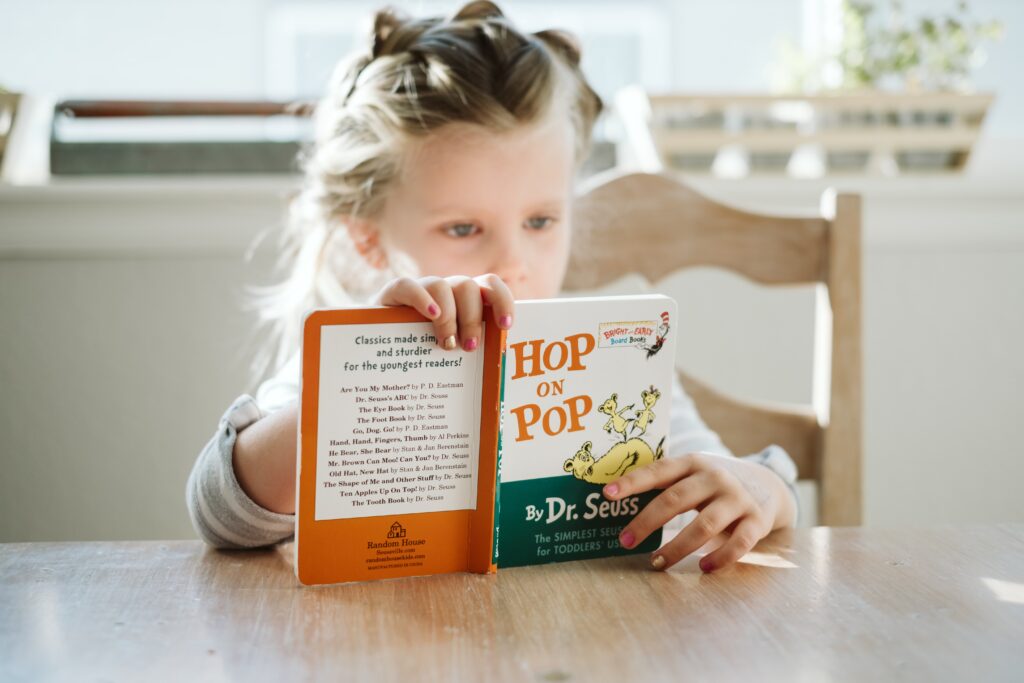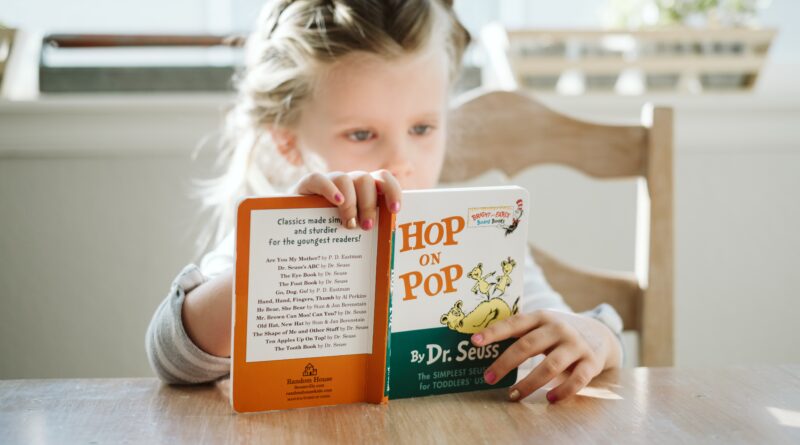Fostering a Love for Books: The Art of Reading to Your Baby
When it comes to your baby’s development, there’s one simple activity that can have a profound impact: reading. The art of reading to your baby is not only a beautiful bonding experience, but it also lays a solid foundation for a lifelong love for books. From the very first day, sharing stories, textures, and colors can captivate their imagination, spark their curiosity, and build important cognitive and language skills. So, grab a cozy blanket, snuggle up with your little one, and embark on an enchanting journey through the pages of a book. The wonders of reading await both of you!
Choosing the Right Books
Considering the Age of Your Baby
When it comes to choosing books for your baby, it’s important to consider their age. Babies develop at different rates, so selecting age-appropriate books is crucial for their engagement and understanding. For newborns and infants, opting for books with high contrast colors and simple patterns can capture their attention. As your baby grows and becomes more curious, you can introduce books with more intricate illustrations and age-appropriate stories.
Opting for Board Books
Board books are a fantastic choice when it comes to reading to your baby. These sturdy books are designed specifically for little hands that love to explore, grab and even chew on everything they get their hands on. Unlike regular paper books, board books are durable and can withstand the rough handling of your little one. They also usually have thick pages that are easy for small fingers to turn, allowing your baby to become an active participant in the story.
Selecting Engaging and Interactive Books
To keep your baby engaged and interested in reading, choose books that are interactive and engaging. Look for books with flaps to lift, touch-and-feel textures, or even books that make sound. These interactive elements not only capture your baby’s attention but also enhance their sensory experience. Books with movable parts or pop-up features can also add an extra level of excitement and fun to the reading session, making it a memorable experience for both you and your baby.
Establishing a Reading Routine
Creating a Cozy Reading Spot
Creating a cozy reading spot is important for setting the mood and creating a positive reading experience for your baby. Find a comfortable and quiet spot in your home where you can snuggle up with your little one. Whether it’s a dedicated reading nook or simply a cozy corner of your living room, make it inviting by adding soft pillows or blankets. This will create a sense of comfort and security, making reading time a special and enjoyable activity for your baby.
Picking a Consistent Reading Time
Consistency is key when it comes to establishing a reading routine with your baby. Choose a specific time of day that works best for both you and your baby, and make it a regular part of your daily schedule. Whether it’s right before bedtime, after a morning feeding, or during a calm afternoon, having a dedicated reading time will help build anticipation and create a sense of routine for your baby. Consistency fosters a positive association with reading and helps your baby understand that reading is an important and enjoyable activity.
Making Reading a Daily Ritual
Turn reading into a daily ritual that you and your baby can look forward to. Make it a special time that signals relaxation and connection. Begin by creating a small routine around reading, such as snuggling up together, turning off distractions, and taking a few deep breaths to create a calm atmosphere. You can also incorporate rituals like singing a short song or reciting a nursery rhyme before starting to read. These simple rituals will not only make reading a cherished activity but also create lasting memories for both you and your baby.

Engaging Your Baby during Reading
Using Different Voices and Expressions
One of the best ways to engage your baby during reading is by using different voices and expressions. Your baby is captivated by your voice, so using different tones and pitches can make the story come alive. Experiment with funny voices for different characters, whispers for secretive moments, or even exaggerated facial expressions to match the emotions in the story. By adding variety to your voice and expressions, you’ll capture your baby’s attention and make the reading experience more engaging and exciting.
Encouraging Pointing and Touching
Encourage your baby to actively participate in the reading experience by pointing and touching the pictures in the book. As you read, gently guide your baby’s finger to different objects or characters on the page. This not only helps develop their fine motor skills but also enhances their understanding of the story. Pointing and touching also aids in their cognitive development as they start associating words with objects and actions. Over time, your baby will begin to independently explore the book with their fingers, immersing themselves in the pictures and words.
Incorporating Songs and Rhymes
Adding songs and rhymes to the reading session can make it more interactive and enjoyable for your baby. Singing nursery rhymes or familiar songs related to the story can enhance their engagement and further develop their language skills. You can even create simple melodies or chants to go along with the story. The rhythm and repetition in songs and rhymes help babies grasp language patterns, making it easier for them to eventually understand the words and phrases in the books they read.
Making Reading Fun and Interactive
Acting Out the Story
Bring the story to life by acting it out with your baby. Use expressions, gestures, and body movements to match the characters or events in the book. For example, if the story features animals, you can imitate their sounds and movements. Encourage your baby to join in by clapping, stomping, or waving their arms. Acting out the story not only makes reading more interactive but also helps your baby understand and connect with the characters and events in a meaningful way.
Asking Questions and Encouraging Responses
During the reading session, ask your baby simple questions and encourage responses. For example, you can ask them what color an object is, or if they can identify different animals. Give them time to respond and react to the questions. Even if your baby is too young to answer verbally, their reactions, gestures, and eye contact can provide valuable cues about their understanding and engagement with the story. This interaction creates a dialogue between you and your baby, making reading a dynamic and stimulating experience.
Playing with Props and Puppets
Using props and puppets while reading can add an element of excitement and playfulness to the story. You can have a stuffed animal act as one of the characters or use simple props like hats, scarves, or toys to represent different objects in the story. This visual representation helps your baby make connections between the real world and the story they’re hearing. It also encourages imaginative play and creativity, making the reading experience more interactive and enjoyable.

Creating a Multisensory Reading Experience
Using Books with Texture and Flaps
Incorporating books with textures and flaps can enrich your baby’s reading experience by engaging their sense of touch. Look for books with different textures such as fur, fabric, or even bumpy surfaces. Allow your baby to explore these textures with their hands as you read. Flap books, where they can lift flaps to reveal hidden pictures or surprises, are also great for tactile exploration. The different textures and interactive elements not only make reading more fun but also promote sensory development in your baby.
Incorporating Sound and Music
Books that incorporate sound and music can captivate your baby’s attention and make reading time a multisensory experience. Look for books that have buttons to press or pages that produce sounds when touched. These interactive sound books often include buttons that play music or sound effects related to the story. As you read, encourage your baby to press the buttons or touch the sound-producing areas on the page. The combination of reading and sound engages multiple senses and enhances your baby’s overall enjoyment and involvement in the story.
Introducing Aromas and Tastes
While it may sound unconventional, introducing aromas and tastes to your reading sessions can create a unique sensory experience for your baby. You can light a scented candle or diffuse essential oils that evoke the setting or mood of the story. For example, if the story takes place in a garden, you can use a floral scent to enhance the atmosphere. Additionally, you can offer small, baby-safe snacks or treats that relate to the story. This multisensory approach creates a complete immersion into the world of the book, making reading a truly unforgettable experience for your baby.
Building Connections with Books
Choosing Books with Familiar Themes
Choosing books with familiar themes can help your baby relate to the story on a personal level. Look for books that feature everyday objects, animals, or activities that your baby is already familiar with. This familiarity allows them to make connections between their own experiences and the characters or events in the book. Books that mirror your baby’s daily routines or depict situations they encounter can also help them understand and navigate their world better. By choosing books with familiar themes, you provide your baby with a sense of comfort and connection to the stories they hear.
Relating the Story to Your Baby’s Experiences
While reading, take the opportunity to relate the story to your baby’s own experiences. For example, if the book mentions going to the park, you can talk about the times when you and your baby have visited a park together. Share stories, memories, or even anecdotes related to the topic of the book. This personal connection not only strengthens the bond between you and your baby but also helps them see reading as a way to learn about the world and their place in it.
Making Personalized Books
Making personalized books for your baby can create a sense of ownership and excitement around reading. You can create simple photo albums with pictures of your baby, their family, and friends, and label them with short captions. As you read these personalized books to your baby, they will feel a strong sense of connection to the people and memories depicted. Making personalized books not only encourages your baby’s interest in reading but also becomes a cherished keepsake as they grow older.

Engaging with Books Beyond Words
Exploring the Book Cover and Illustrations
Encourage your baby to engage with the books beyond just the words on the page. Start by exploring the book cover and the illustrations before delving into the story. Allow your baby to look at the pictures, point at objects, and talk about what they see. Discuss the colors, shapes, and patterns they notice. This exploration helps develop their visual perception skills and fosters a deeper connection with the book before even reading a single word.
Talking about Colors, Shapes, and Patterns
As you read, engage your baby in conversations about colors, shapes, and patterns within the book. Point out different colors and ask your baby to identify them. Talk about shapes and compare them to objects in their surroundings. Identify patterns in the illustrations and encourage your baby to trace them with their finger. By discussing these elements, you introduce new vocabulary and concepts, building their understanding of the world around them.
Enabling Tactile Exploration
Tactile exploration plays a significant role in a baby’s understanding and engagement with books. Allow your baby to touch and feel the different textures within the book. Let their fingers trace the lines, bumps, or ridges on the pages. If the book features objects, allow them to touch and explore those as well. Sensory experiences through touch help babies develop their fine motor skills, enhance their cognitive development, and create a deeper connection with the story.
Encouraging Independent Book Exploration
Creating a Book-Friendly Environment
Creating a book-friendly environment at home is essential for encouraging your baby’s independent book exploration. Set up a bookshelf or a low bookcase where your baby can easily see and reach their books. Organize the books in a way that makes them easily accessible to your baby, either by category, size, or favorite characters. Make sure the area is well lit and comfortable, with soft seating nearby. By creating an inviting space with books prominently displayed, you encourage your baby to explore and engage with them independently.
Keeping Books Within Reach
Keeping books within your baby’s reach allows them to independently choose and explore the books they’re interested in. Place a few books in a special basket or on a low shelf that your baby can easily access. Additionally, consider having a small selection of books nearby as you go about your daily routines. By having books readily available, your baby can grab them whenever they feel the desire to read or explore independently.
Allowing for Independent Page Turning
As your baby grows, they will develop the motor skills necessary to turn pages independently. Encourage this independence by allowing them to practice turning the pages of their books on their own. Initially, they may turn multiple pages or struggle to grasp the thin pages, but with patience and practice, they will become proficient at flipping through the pages. This independent page turning not only strengthens their fine motor skills but also gives them a sense of autonomy and accomplishment.
Role Modeling a Love for Reading
Letting Your Baby See You Read
One of the most effective ways to foster a love for reading in your baby is by letting them see you read. Babies are keen observers and love to imitate their caregivers. Set aside some time each day to read your own book, newspaper, or magazine in the presence of your baby. Make sure they can see the cover and the pages you’re reading. This act of reading not only demonstrates the importance of books but also instills a desire to imitate and engage with reading as a daily activity.
Discussing Books with Enthusiasm
When discussing books with your baby, show enthusiasm and excitement. Use positive language and gestures to express joy, surprise, or amusement as you talk about the story or the illustrations. Point out interesting details, make connections, and share your own emotions related to the book. Your enthusiasm will be contagious and will shape your baby’s perception of reading as an enjoyable and valuable activity.
Participating in Family Reading Time
Participating in family reading time can create a positive and engaging environment for your baby. Set aside specific times during the day or week when the whole family can gather to read. Make it a special event where everyone chooses their own book and reads silently or out loud. Even if your baby is too young to read, they will feel included and develop a sense of belonging as they see their family members engrossed in their own books. Family reading time not only promotes a love for reading but also strengthens family bonds.
Seeking Support from Libraries and Community
Attending Library Storytimes
Libraries are treasure troves of books and a valuable resource for parents and babies alike. They often host storytimes specifically catered to different age groups, including babies and toddlers. Attending library storytimes exposes your baby to a wider range of books, introduces them to other children, and provides opportunities for interactive reading experiences. Many libraries also offer additional resources such as parenting workshops, early literacy programs, and access to a diverse collection of books that can enrich your baby’s reading journey.
Joining Parent-Child Book Clubs
Joining parent-child book clubs is a fantastic way to further engage in reading with your baby. These book clubs are designed to foster a love for reading and provide a forum for discussions and bonding between parents and their little ones. The clubs often have curated book lists and reading schedules, allowing you to explore a variety of books tailored to your baby’s age. Participating in these book clubs not only expands your baby’s reading repertoire but also provides the opportunity to connect with other parents who share similar interests.
Exploring Book-Related Events
Keep an eye out for book-related events happening in your community. These may include book fairs, author signings, or even children’s literature festivals. These events offer a unique opportunity for your baby to witness the excitement and celebration surrounding books. Attending these events not only exposes your baby to a larger community of book lovers but also reinforces the idea that reading is a joyful and meaningful activity. These experiences can leave a lasting impression on your baby and nurture their love for books throughout their lives.
Reading to your baby is a beautiful and enriching experience that lays the foundation for a lifelong love of books. By carefully selecting age-appropriate books, establishing a reading routine, and engaging your baby in different ways during reading, you can create a positive and stimulating environment that fosters their love for reading. By incorporating multisensory elements, building connections with books, and encouraging independent exploration, you further deepen their engagement and understanding. Through your own love for reading, role modeling, and seeking support from libraries and the community, you inspire your baby to explore the magic of books and embark on countless adventures within their pages. So, grab a book, snuggle up, and enjoy the wonderful journey of reading with your baby.




